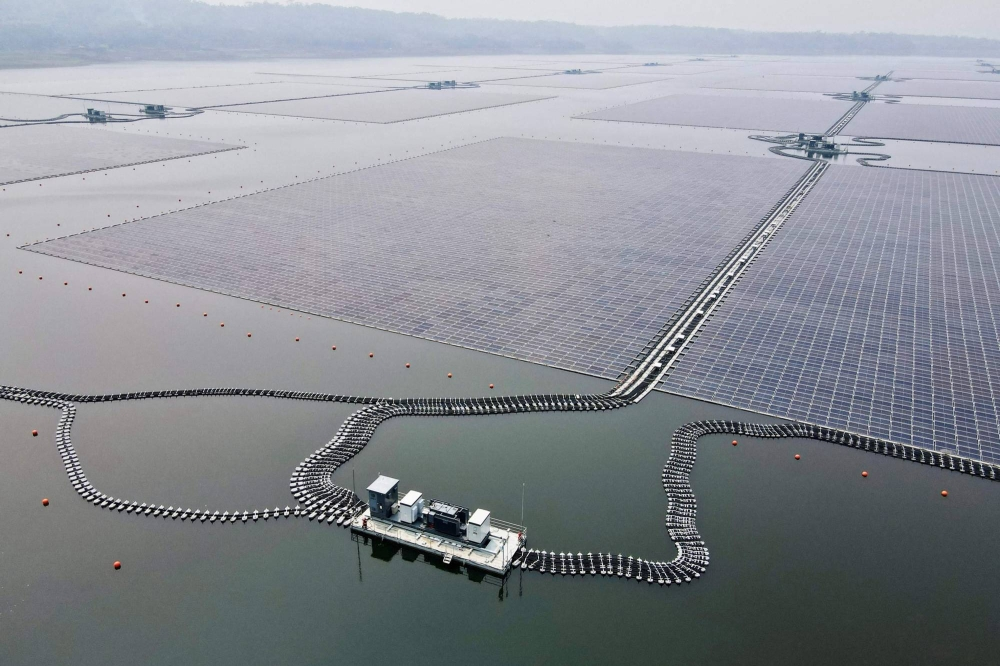Indonesia is seeking to expand its growth and investment potential by focusing on the green economy and downstream industries to add value to its existing natural resources production.
The country has a wealth of coal, nickel, tin, copper and bauxite, which are used in the creation of aluminium. In natural resources, Indonesia is the largest producer of crude palm oil, and the second-biggest exporter.
Speaking at the Indonesia Investment Forum 2023, held in London in October, Nurul Ichwan, deputy minister for investment promotion at the Ministry of Investment, Indonesia, said: “Indonesia has an abundance of natural resources, but we have limited capacity in technology, while those who have very advanced amounts of capital don’t have these kinds of natural resources.”
One of the areas of focus is the development of secondary products from its commodities, such as biofuels. These include bioavtur, a biofuel created for the aviation industry, which is produced using refined palm oil. It is a priority of the Ministry of Investment that Indonesia will provide $95.4bn of global demand for biodiesel and biovatur by 2045. Meanwhile, bioethanol, which is produced from common agricultural crops including sugarcane, potato and corn, will hopefully reach $22.4bn.
Electric vehicles
Another area that has been identified for growth is the production of electric vehicles (EVs). Mr Ichwan said: “We would like to have an ecosystem of EV battery manufacturing in Indonesia.”
To date, Indonesia has agreed partnerships with Asian, American and European EV manufacturers. Developments include a $8bn partnership with Taiwan’s Foxconn, $5bn with China’s CNGR, and $2.3bn with Germany’s PowerCo.
This has been supported by incentives to support the EV ecosystem’s development, including several tax breaks, such as tax holidays, a tax allowance, and import duty exemption. Further fiscal and non-fiscal benefits are applied for investors in the EV ecosystem, including a 35–50% discount on electricity rates given to public electric vehicle charging stations (SPKLU) businesses, ease of obtaining SPKLU licensing, and risk-weighted assets for EV financing in both producing and buying is reduced from 75% to 50%.
Also speaking at the Indonesia Investment Forum 2023, John Murton, senior sustainability advisor at Standard Chartered, said these developments come with additional complexities: “Indonesia has a role in the low-carbon economy. There has been a rise in demand for EVs in Asia. But this requires minerals and components to be extracted and developed. This means more mines and smelters are needed to meet these demands.”
Power production
Indonesia is making great strides in moving towards developing renewable infrastructure, but still has a number of coal-fired power plants.
The country has outlined an energy mix target of integrating 42% of new renewable energy by 2030. Projects which are currently in development include the Cirata floating solar power plant, capable of producing 145 megawatts (MW), with an investment cost of $129m; the Sidrap window power plant, with a capacity of 75MW and a cost of $150m; and the Likupang solar power plant, with a peak capacity of 21MW and an investment cost of $29.2m.
However, there are issues around the existing coal-fired infrastructure. “In Indonesia, the coal fleet has been built, but it’s only eight or nine years old. That is the challenge, how to phase out the coal-fired stations ahead of their natural life, and bring together carbon credit and other mechanisms to bring about early phase out,” Mr Murton said.
In addition, the geography of Indonesia’s 6000 inhabited islands makes connectivity complex.
“Indonesia is not one coherent grid, despite great efforts. The country faces difficult scenarios where there could be ample capacity in Java, but other islands need to build out power,” Mr Murton said. “Capacity needs to be built on each island, and operate as independent grids. There is also a global shortage of the high-voltage direct current cables needed to transport electricity. There are issues of having captive power built out in Sulawesi, but these are combined with how to reduce the use of coal in Java.
“The private sector is able to sit down with the government and explain where they are facing barriers to investment. The multilateral development banks can come in and work on the projects, with the commercial banks. It enables the key actors to all work together.”
Carbon credits
Another area that is being explored is how carbon credits can enhance the Indonesian economy. With the third-largest coverage of tropical rainforest globally, and the largest areas of both mangrove and peatland, it is estimated Indonesia could absorb 1.3 billion tonnes of carbon emissions a year. In addition, it is hoped that the country’s seagrass and seaweed could further contribute.
Nature-based projects offer $18.2bn a year to the carbon economy. Indonesia has the second-largest natural climate solution (NCS), after Brazil. Indonesia has the potential to supply 20% of global carbon credit demand.
Source : TheBanker


